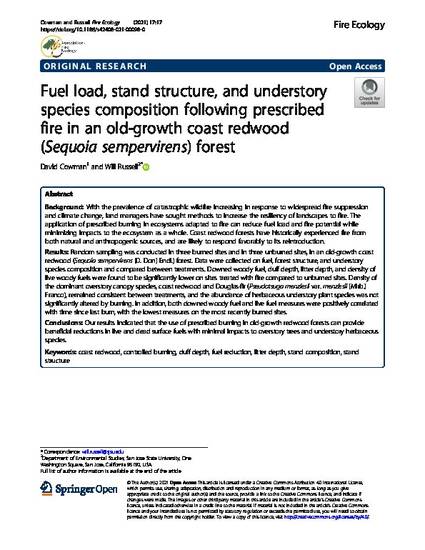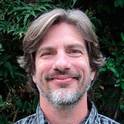
Background: With the prevalence of catastrophic wildfire increasing in response to widespread fire suppression and climate change, land managers have sought methods to increase the resiliency of landscapes to fire. The application of prescribed burning in ecosystems adapted to fire can reduce fuel load and fire potential while minimizing impacts to the ecosystem as a whole. Coast redwood forests have historically experienced fire from both natural and anthropogenic sources, and are likely to respond favorably to its reintroduction. Results: Random sampling was conducted in three burned sites and in three unburned sites, in an old-growth coast redwood (Sequoia sempervirens [D. Don] Endl.) forest. Data were collected on fuel, forest structure, and understory species composition and compared between treatments. Downed woody fuel, duff depth, litter depth, and density of live woody fuels were found to be significantly lower on sites treated with fire compared to unburned sites. Density of the dominant overstory canopy species, coast redwood and Douglas-fir (Pseudotsuga menziesii var. menziesii [Mirb.] Franco), remained consistent between treatments, and the abundance of herbaceous understory plant species was not significantly altered by burning. In addition, both downed woody fuel and live fuel measures were positively correlated with time since last burn, with the lowest measures on the most recently burned sites. Conclusions: Our results indicated that the use of prescribed burning in old-growth redwood forests can provide beneficial reductions in live and dead surface fuels with minimal impacts to overstory trees and understory herbaceous species.
- coast redwood,
- controlled burning,
- duff depth,
- fuel reduction,
- litter depth,
- stand composition,
- stand structure
Available at: http://works.bepress.com/will_russell/23/
